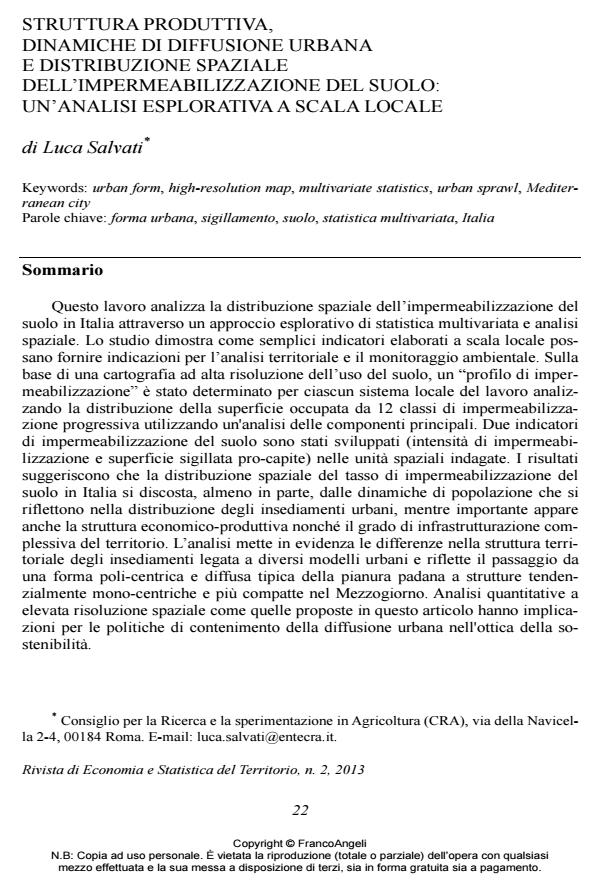Economic structure, urban diffusion and soil sealing: an explorative analysis at the local scale in Italy
Journal title RIVISTA DI ECONOMIA E STATISTICA DEL TERRITORIO
Author/s Luca Salvati
Publishing Year 2013 Issue 2013/2
Language Italian Pages 15 P. 22-36 File size 920 KB
DOI 10.3280/REST2013-002002
DOI is like a bar code for intellectual property: to have more infomation
click here
Below, you can see the article first page
If you want to buy this article in PDF format, you can do it, following the instructions to buy download credits

FrancoAngeli is member of Publishers International Linking Association, Inc (PILA), a not-for-profit association which run the CrossRef service enabling links to and from online scholarly content.
The present paper explores the spatial distribution of soil sealing in Italy through multivariate statistics and spatial analysis. Methods and Results Based on a high-resolution land-use map, a "sealing profile" was determined for each travel-to-work area by analysing the distribution of land occupied by 12 classes of imperviousness using a Principal Components Analysis. Two indicators of soil sealing have been developed (sealing intensity and per capita sealed land) and the investigated districts have been classified accordingly. Different urbanization patterns have been identified based on population density, the district economic structure and infrastructure at the local scale. Conclusions The study indicates the transition from a mono-centric and more compact urban form to a polycentric and dispersed agglomeration with implications for urban containment policies and environmental monitoring strategies
Keywords: Urban form, high-resolution map, multivariate statistics, urban sprawl, Mediterranean city
Jel codes: Q15, Q24, Q57, R14, R52
Luca Salvati, Struttura produttiva, dinamiche di diffusione urbana e distribuzione spaziale dell’impermeabilizzazione del suolo: un’analisi esplorativa a scala locale in "RIVISTA DI ECONOMIA E STATISTICA DEL TERRITORIO" 2/2013, pp 22-36, DOI: 10.3280/REST2013-002002